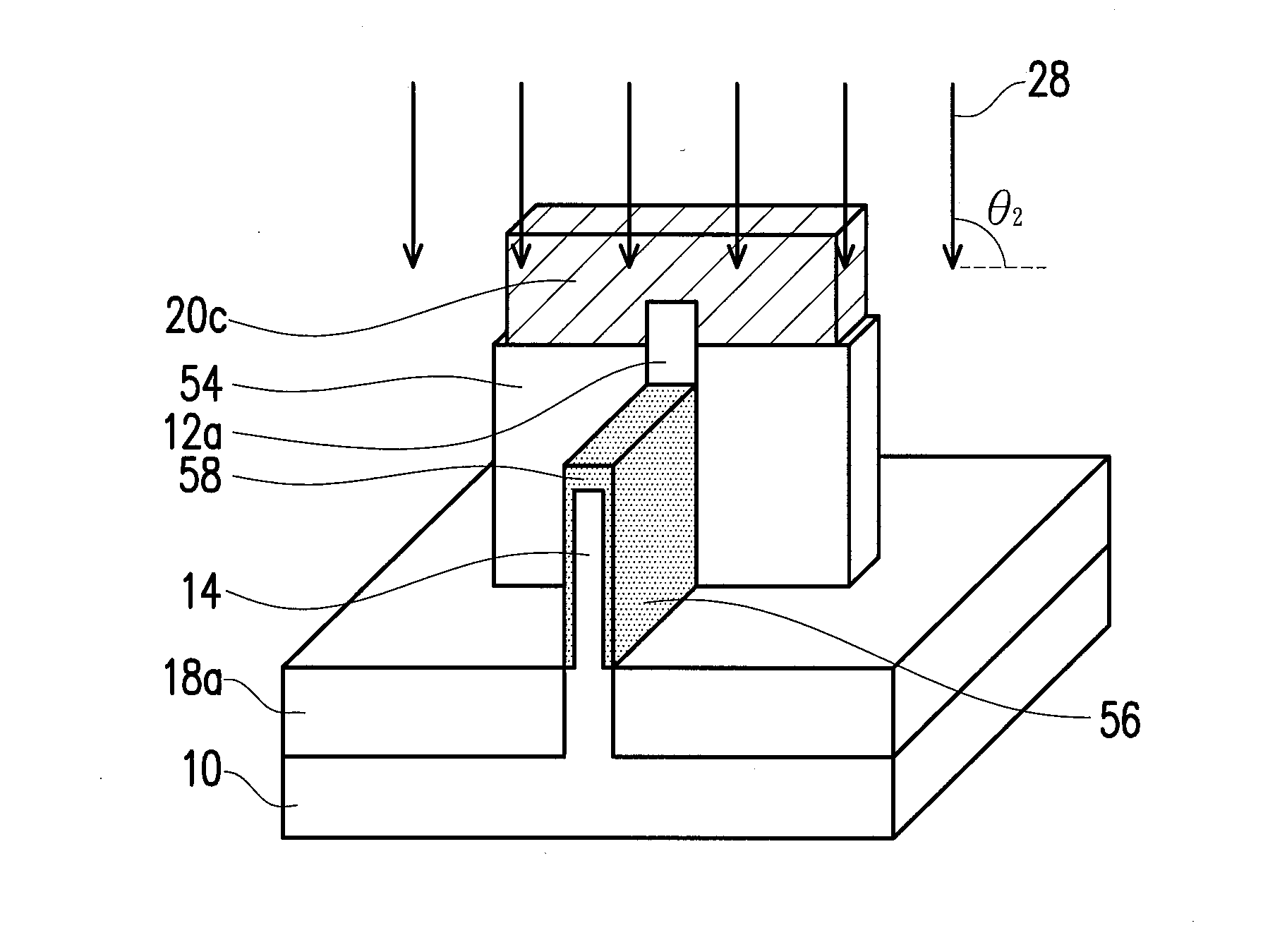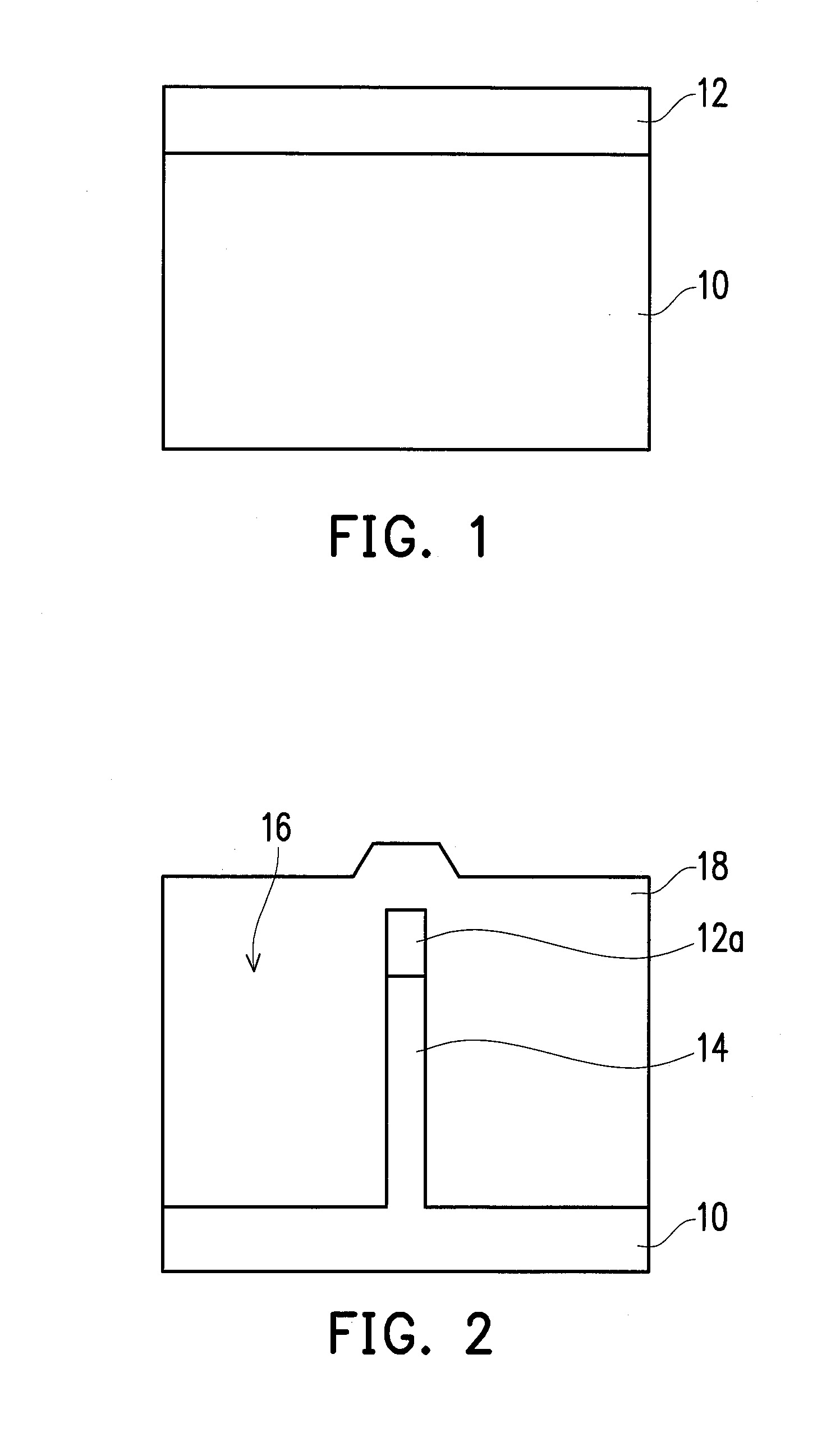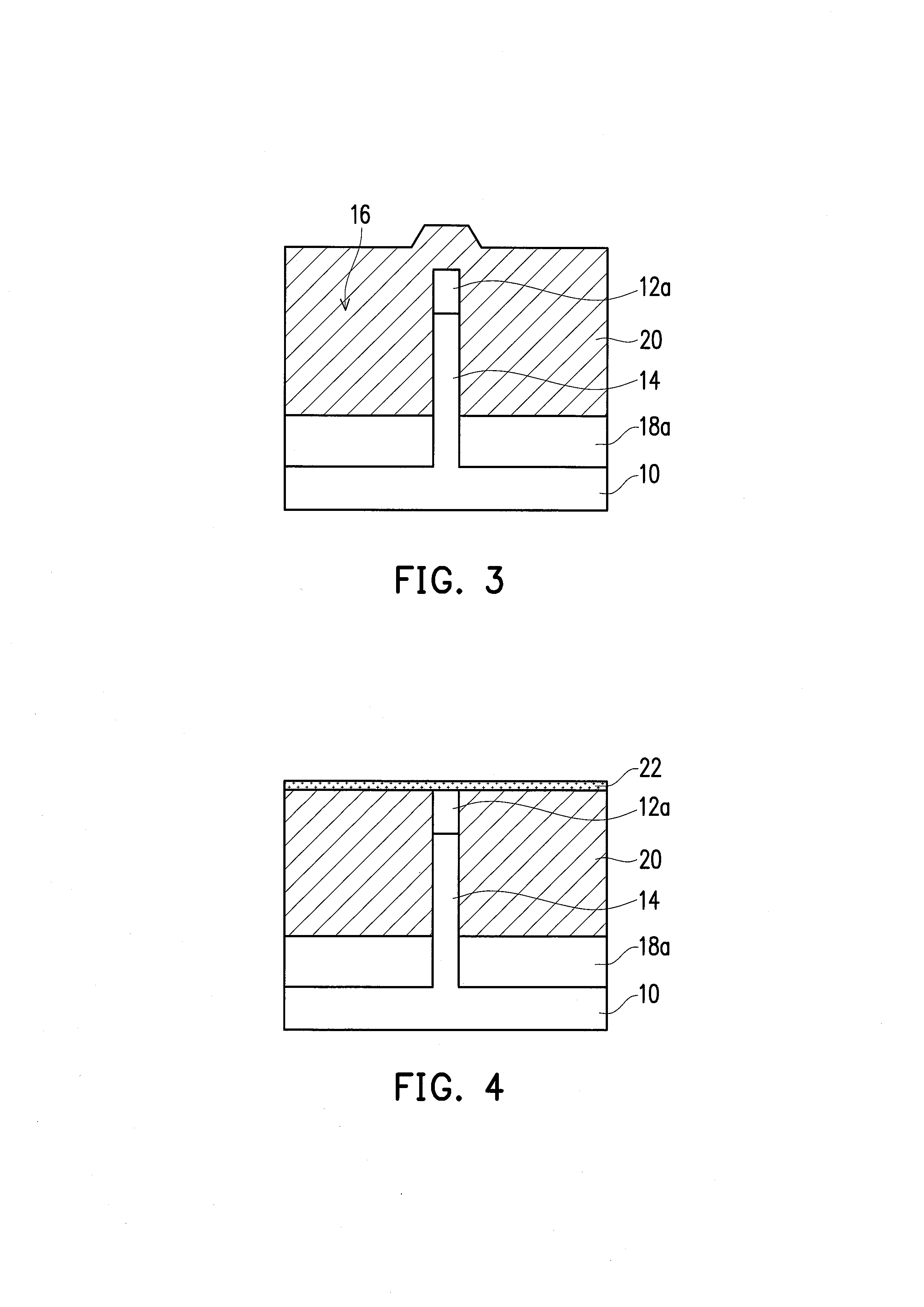Method for fabricating mos device
a metaloxidesemiconductor and device technology, applied in the field of metaloxidesemiconductor (mos) device fabrication, can solve the problems of limited halo region and small process margin, and achieve the effect of improving the process margin of the implant process
- Summary
- Abstract
- Description
- Claims
- Application Information
AI Technical Summary
Benefits of technology
Problems solved by technology
Method used
Image
Examples
Embodiment Construction
[0019]FIGS. 1-7 illustrate, in a side view along the first direction, a method for fabricating a MOS device according to an embodiment of this invention. FIGS. 8-11 illustrate, in a cross-sectional view along the second direction, further fabricating steps performed after the step shown in FIG. 7. FIGS. 5A-7A are perspective views of the structures shown in FIGS. 5-7.
[0020]Referring to FIG. 1, a hard mask material layer 12 is formed over the substrate 10. The substrate 10 may include a semiconductor material, such as silicon. The hard mask material layer 12 may be a single material layer or include two or more material layers. In an embodiment, the hard mask material layer 12 includes a silicon dioxide (SiO2) layer and a silicon nitride (SiN) layer thereon. The SiO2 layer and the SiN layer can be formed by CVD. The SiO2 layer may have a thickness of 20-200 angstroms. The SiN layer may have a thickness of 500-3000 angstroms.
[0021]Referring to FIG. 2, lithography and etching processes...
PUM
 Login to View More
Login to View More Abstract
Description
Claims
Application Information
 Login to View More
Login to View More - R&D
- Intellectual Property
- Life Sciences
- Materials
- Tech Scout
- Unparalleled Data Quality
- Higher Quality Content
- 60% Fewer Hallucinations
Browse by: Latest US Patents, China's latest patents, Technical Efficacy Thesaurus, Application Domain, Technology Topic, Popular Technical Reports.
© 2025 PatSnap. All rights reserved.Legal|Privacy policy|Modern Slavery Act Transparency Statement|Sitemap|About US| Contact US: help@patsnap.com



